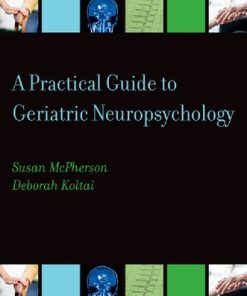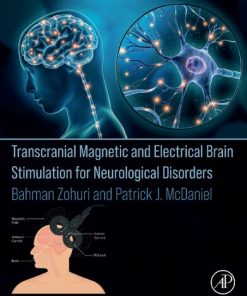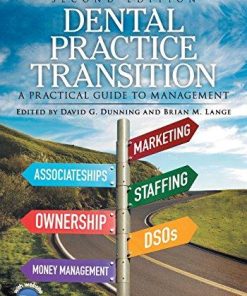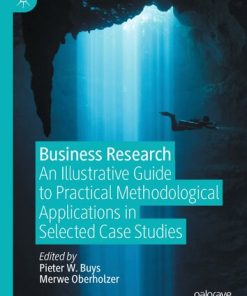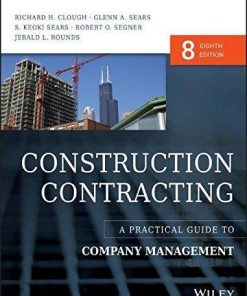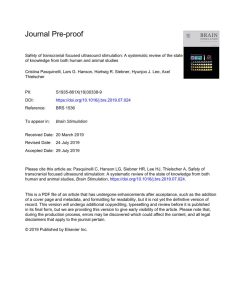A Practical Guide to Transcranial Magnetic Stimulation Neurophysiology and Treatment Studies 1st edition by Robert Chen, Paul Fitzgerald, Daniel Blumberger 0199335862 9780199335862
$50.00 Original price was: $50.00.$25.00Current price is: $25.00.
A Practical Guide to Transcranial Magnetic Stimulation Neurophysiology and Treatment Studies 1st edition by Robert Chen, Paul B. Fitzgerald, Daniel M. Blumberger – Ebook PDF Instant Download/DeliveryISBN: 0199335862, 9780199335862
Full download A Practical Guide to Transcranial Magnetic Stimulation Neurophysiology and Treatment Studies 1st edition after payment.
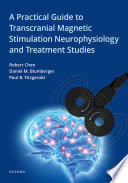
Product details:
ISBN-10 : 0199335862
ISBN-13 : 9780199335862
Author : Robert Chen, Paul B. Fitzgerald, Daniel M. Blumberger
Transcranial magnetic stimulation (TMS) is a widely used non-invasive brain stimulation technique. It represents an exciting new frontier in neuroscience research and can be used to examine neural processes, providing insights into pathophysiology and treating a variety of neuropsychiatric illnesses. A Practical Guide to Transcranial Magnetic Stimulation Neurophysiology and Treatment Studies presents an overview of the use of TMS as both an investigational tool and as treatment for neurological and psychiatric disorders. The chapters include an overview of the history and basic principles of TMS and repetitive TMS (rTMS), the different types of TMS coils, different stimulation approaches, the use of neuronavigation, and safety considerations. The utility of single and paired TMS techniques to measure cortical inhibition, facilitation, connectivity and reactivity in motor and non-motor brain areas, the different methods of using TMS to induce brain plasticity, and use of TMS in cognitive studies are explored. It also covers TMS and rTMS combined with electroencephalography (EEG) in neurophysiological studies. The authors provide a summary of the clinical applications of TMS in neurological and psychiatric disorders including depression, schizophrenia, stroke, Parkinson disease, and pain. This up-to-date volume provides a compendious review of the use of TMS and rTMS that will help guide the utility of this methodology in both clinical and research settings. This practical guide will be a useful resource for those new to the field, as well as experienced users, for both research and clinical settings.
A Practical Guide to Transcranial Magnetic Stimulation Neurophysiology and Treatment Studies 1st Table of contents:
Section I TMS Neurophysiology
1. The History of TMS and Basic Principles of TMS and rTMS
1.1 Introduction
1.2 The Development of the Sciences Underpinning TMS
1.3 Modern TMS
1.4 Basic Principles
1.5 Repetitive TMS
2. TMS and Neuronavigation Equipment
2.1 Basic Components of TMS
2.2 Neuronavigation
3. Single-, Paired-, Triple-Pulse TMS for Motor Physiological Studies
3.1 Single-Pulse TMS Measurements
3.2 Paired-Pulse TMS Studies
3.3 Conditioning Stimulation from the Cerebellum or Peripheral Nerves
3.4 Stimulation of Other Cortical Areas: Intrahemispheric (Ipsilateral) Cortical Connections to the Motor Cortex
3.5 Interhemispheric Cortical Connections
3.6 Interaction Between Cortical Circuits
3.7 Assessment of Cortical Versus Spinal Excitability
3.8 Number of TMS Pulses Required and Optimal Intertrial Intervals to Assess Corticospinal Excitability
3.9 Clinical Diagnostic Utility of TMS
3.10 Conclusion
4. Induction of Motor Cortical Plasticity with Transcranial Magnetic Stimulation
4.1 Introduction
4.2 Paired Associative Stimulation
4.3 Regular Repetitive Transcranial Magnetic Stimulation
4.4 Theta Burst Stimulation
4.5 TMS at I-Wave Frequency
4.6 Disinhibition Stimulation
4.7 Quadripulse Stimulation
4.8 Comparisons Between Different Plasticity Protocols
4.9 Summary of Differences Among Plasticity Protocols
5. TMS in Nonmotor Neurophysiological Studies
5.1 Introduction
5.2 Induction of Phosphenes by TMS
5.3 Stimulation of the Primary Somatosensory Cortex
5.4 Use of TMS to Investigate Action Inhibition
5.5 Conclusion
6. TMS in Cognitive Studies
6.1 Introduction
6.2 Methodologic Considerations for TMS
6.3 Potential Mechanisms of Cognitive Impairment and Enhancement
6.4 Potential Applications: Understanding and Improving Cognitive Impairments
6.5 Conclusion
7. TMS with EEG
7.1 Introduction
7.2 Outcome Measures of TMS–EEG
7.3 Artifacts
7.4 Testing Parameters and Considerations
7.5 TMS-EEG Applications
7.6 Conclusion
8. Combining TMS with Neuroimaging
8.1 Introduction
8.2 Offline TMS-Neuroimaging Studies: Studies of Single Stimulation Sessions
8.3 Online TMS-fMRI
8.4 Conclusion
Section II rTMS as Treatment of Neurological and Psychiatric Disorders
9. The Use of rTMS and Other Forms of Brain Stimulation in the Treatment of Neuropsychiatric Disorders
9.1 Introduction
9.2 The Selection of Stimulation Location
9.3 Determination of a Relevant Method to Ensure That Stimulation is Applied Accurately to the Chosen Location
9.4 Frequency of Stimulation
9.5 Treatment Scheduling and Dose
9.6 Stimulation Intensity
9.7 Coil Orientation
9.8 Brain Activation
9.9 Conclusion
10. Clinical Applications of Transcranial Magnetic Stimulation in Stroke
10.1 Introduction
10.2 Role of TMS in the Prognosis of Recovery from Stroke
10.3 Role of TMS in Understanding the Pathophysiology of Stroke and in Outcome Assessment
10.4 rTMS as Treatment of Stroke
10.5 Conclusion and Future Perspectives
11. rTMS as Treatment for Movement Disorders
11.1 Introduction
11.2 Parkinson’s Disease
11.3 Dystonia
11.4 Functional Movement Disorders
11.5 Conclusion
12. rTMS as Treatment for Other Neurological Disorders
12.1 Introduction
12.2 Epilepsy
12.3 Multiple Sclerosis
12.4 Pain
12.5 Tinnitus
13. rTMS for the Treatment of Depression
13.1 Introduction
13.2 Therapeutic Effects of rTMS in Depression
13.3 Improving Efficacy and Efficiency
13.4 Scheduling and Maintenance Approaches
13.5 rTMS for Special Populations with Depression
13.6 Current Challenges and Future Directions
13.7 Conclusion
14. rTMS for Other Psychiatric Disorders
14.1 Introduction
14.2 Schizophrenia
14.3 Mania
14.4 Obsessive Compulsive Disorder
14.5 Posttraumatic Stress Disorder
14.6 Other Anxiety Disorders
14.7 Disorders of Addiction
14.8 Conclusion
15. Safety Considerations and Management of TMS Side Effects
15.1 Introduction
15.2 Safety Considerations
15.3 Potential Adverse Effects
15.4 Safety Guidelines
15.5 Mitigating and Managing Risks
15.6 Managing Emergencies
15.7 Conclusion
People also search for A Practical Guide to Transcranial Magnetic Stimulation Neurophysiology and Treatment Studies 1st:
types of transcranial magnetic stimulation
what is transcranial magnetic stimulation
how does transcranial magnetic stimulation work
transcranial magnetic stimulation neurology
transcranial magnetic stimulation vs neurofeedback
Tags: Practical Guide, Transcranial Magnetic, Stimulation Neurophysiology, Treatment Studies, Robert Chen, Paul Fitzgerald, Daniel Blumberger
You may also like…
Technique - Electronics
Semiconductor Microchips and Fabrication: A Practical Guide to Theory and Manufacturing Yaguang Lian
Cookbooks
Pulp A Practical Guide to Cooking with Fruit 1st edition by Abra Berens 1797207164 9781797207162
Medicine - Neurology
Earth Sciences - The Environment
The Palgrave Handbook of Sustainability: Case Studies and Practical Solutions Robert Brinkmann





